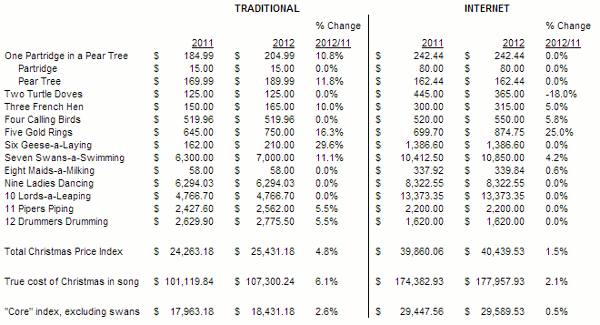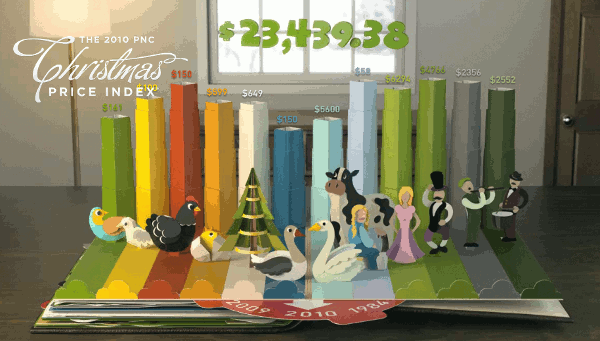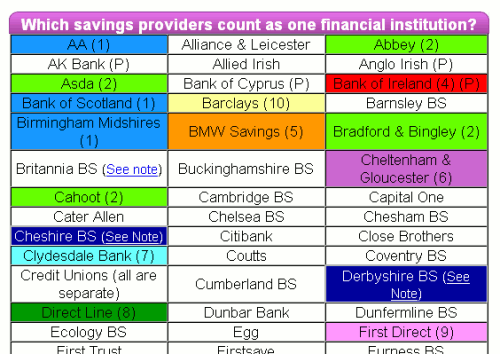Prices for six items in “The Twelve Days of Christmas” song on par with 2011, but drought causes swans and geese prices to soar
Christmas has many traditions and one of the more recently established ones is the Christmas Price Index compiled by PNC Wealth Management.
The 29th annual survey reveals that an improving US economy coupled with a severe drought that caused increased feed costs for large birds resulted in a 4.8 percent surge in the 2012 PNC Christmas Price Index. Based on the gifts in the holiday classic, “The Twelve Days of Christmas,” the price tag for the PNC CPI is $25,431.18 in 2012, $1,168 more than last year.
“The rise of the PNC CPI is larger than expected considering the modest economic growth we’ve had over the past 12 months,” said Jim Dunigan, managing executive of investments for PNC Wealth Management. “Despite some weak spots in the economy, consumer balance sheets are improving along with consumer confidence, which means this may still be a spirited holiday season.”
PNC Wealth Management also tabulates the “True Cost of Christmas,” which is the total cost of items gifted by a True Love who repeats all of the song’s verses. True Loves must spend over $107,300.24 for all 364 gifts, a 6.1 percent increase on last year.

Swans rose by 11.1 percent whilst six items (the Partridge, Two Turtle Doves, Four Calling Birds, Eight Maids-A-Milking, Nine Ladies Dancing and 10 Lords-A-Leaping) remained the same price as last year.
The prices for 11 Pipers Piping ($2,562.00) and 12 Drummers Drumming ($2,775.50) are up 5.5 percent
The Three French Hens were up 10.0 percent and the Five Gold Rings soared 16.3 percent.
As the only unskilled labourers in the PNC CPI the price for the eight Maids-a-Milking is represented by the minimum wage. With the US minimum wage flat at $7.25 per hour hiring the maids this year will not increase labour costs.
For those True Loves who prefer the convenience of shopping online, PNC Wealth Management also calculates the cost of “The Twelve Days of Christmas” gifts purchased on the Internet. True Loves will pay a grand total of $40,440 to buy the items online, which is 1.5 percent more than last year and almost $580 more than this year’s traditional index.
“In general, Internet prices are higher than their non-Internet counterparts because of premium shipping costs for birds and the convenience factor of shopping online,” Dunigan said.
The full press release is at http://pnc.mediaroom.com/index.php?s=3473&item=133834 and the index itself is at http://content.pncmc.com/live/pnc/microsite/CPI/index.html. The site includes an interactive scavenger hunt where visitors can take a trip around the world to locate the 12 gifts of Christmas.
Historical data can be downloaded as a spreadsheet from:
http://content.pncmc.com/staging/pnc/microsite/CPI/2012/downloads/PNC_CPI_Historical_Data_2012.xlsx

